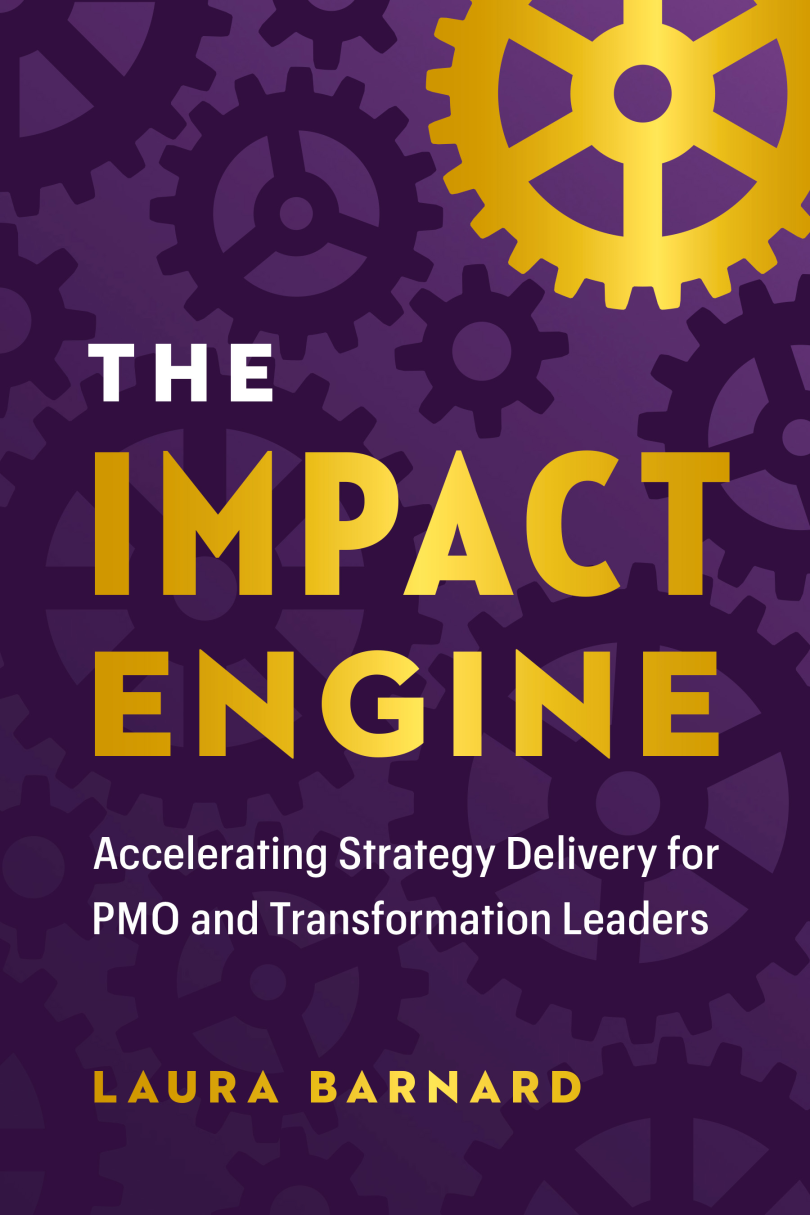Many organizations attempt to implement an Agile framework like Scrum, thinking it will solve resource conflicts through practices like daily stand-ups, sprint planning and retrospectives.
However, while these techniques can help allocate resources at the team level, initiative-level Agile approaches do not fully address the deeper strategic issues of shared resource allocation across initiatives to accelerate the entire portfolio.
As a result, delivery managers start begging business leaders for more resources, but because nothing is moving, the executives are reluctant to add more money and resources to solve the problem because they aren’t convinced the resources are “fully utilized.”
This causes what appears to be a resource management problem when the delivery team is simply trying to do too many simultaneous projects for the resources they have.
3 Components of a Successful Strategy
- Definition: Defining the strategy and the desired strategic outcomes.
- Execution: Executing on that strategy while maintaining focus on the outcomes.
- Realization: Ensuring that the strategic outcomes are realized.
The Project Prioritization Problem
You don’t have a resource management problem — you have a shoving 10 pounds of projects into a five-pound bag problem. And even when resource managers think it’s only five pounds of projects, they’re trying to maximize utilization of those resources (inputs) instead of trying to maximize the value delivery cadence (outcomes).
What you need to do is shift your focus from begging for resources for a pile of stalled projects to making sure projects are prioritized by their value to the organization and started only when you have the resources to do them in a way that maximizes the cadence of value delivery.
If you did nothing else but make this shift, you would be on your way to improving your organization’s ability to deliver on the strategy. But even this shift isn’t enough to leap the chasm between how business leaders define strategy and how delivery teams execute that strategy. There are more gaps to consider.
The ‘Why’ Problem
Now, let’s look at it from the role of the delivery organization you have been asked to set up.
Even if projects are prioritized initially, you still may find that executives are pressuring their staff to start all the projects at once because “we have the funding now” instead of staggering the work in a way that drives the fastest throughput across the portfolio.
Such fractional resource assignments prevent the delivery teams from focusing on their most important work because they are constantly responding to the squeakiest wheel and trying to show progress on all the projects under way, all while responding to their own manager who keeps redirecting them to other work.
Executives are widening this gap between strategy and execution even further by failing to take the necessary time to ensure the delivery teams truly understand the company’s strategy. According to Harvard Business Review, 95 percent of the typical workforce does not understand their company’s strategy.
In other words, it’s likely that many people doing execution work in your organization don’t know why they’re doing what they’re doing. If that’s the case, how is the workforce supposed to deliver the strategy in a way that ensures the goals of that strategy are met?
Just as a road trip is unlikely to arrive at its desired destination as planned if the driver does not have access to the map directing their journey, an organization’s strategic goals are at risk if the workforce is driving in the dark with no understanding why their day-to-day work matters to reaching those objectives.
The Multitasking Problem
With slow progress, executives look around and instead of asking, “What got done today?” they find themselves asking, “What didn’t happen today?”
That’s when frustrated executives double down on pressuring delivery leaders to “fix project management,” and because they aren’t sure what else to do, the delivery leaders add more templates, more tools and more processes, slowing things down even further.
Unfortunately, everything is still a number one priority, the strategy is still unclear to the people responsible for delivering that strategy, resources are still overallocated, managers still keep redirecting staff and projects still don’t meet goals.
The projects cost more than the benefits they were designed to achieve, and nobody’s measuring value anyway, so who knows if the projects were worth doing in the first place? All of that means that results not only don’t improve, but often, get even worse. The vicious circle continues. No one learns any lessons in the process, and frustrations grow.
Even when the resources are not overallocated, the fact that they are fractionally assigned means everything they’re fractionally assigned to will be far slower. Some resource managers will pat themselves on the back when everyone is at 90 to 100 percent utilization and think that everything is optimal because no one is overallocated.
However, the resources are task-switching so much that they aren’t getting much of anything done quickly or with quality. That task-switching can cost the organization up to 40 percent loss in productivity according to the American Psychological Association.
The reason this is happening is that most leaders focus on fixing execution instead of setting their strategy up for success right from the start. In 61 percent of organizations, there’s a failure to bridge the gap between strategy formulation and its day-to-day implementation.
They can’t close the strategy-to-execution gap because there’s more than one gap. It’s as if leaders are trying to build a house without a solid foundation.
This is where you come in.
The Strategic IMPACT Solution
To break this vicious circle, you must broaden your focus beyond project execution. Don’t get stuck trying to “fix project management,” rearranging furniture when the floor is about to fall into the basement, by focusing all of your efforts on strategy execution.
Instead, optimize the entire strategy lifecycle — from strategy definition to execution to realization of business value.
Shift left on the strategy lifecycle to strategy definition, instead of starting in strategy execution, to front-load success by aligning initiatives to strategy before projects start. Bridge communication gaps between stakeholders throughout the process. Maintain line-of-sight from tasks to overarching objectives.
By linking execution to business value and enabling strong hand-offs between genuinely focused teams, you can drive strategic IMPACT. This big-picture perspective is key to improving project outcomes and achieving organizational goals.

You might be thinking, “This is great, but you’re adding more work to my already full plate!” This isn’t about more reactive work, though — it’s about starting at the start to prevent problems proactively.
When you support the full strategy lifecycle, you’ll get the seat at the table and the respect that you deserve. Your organization will see your true worth.
You were put in this role because executives aren’t getting the desired results. They blame execution, but you know now that this is usually a downstream effect of upstream issues such as poor prioritization, fractional resource assignments that dilute execution focus and a misplaced emphasis on resource utilization over the value delivery cadence.
Your job is setting up the strategy for success from the start across three phases: definition, execution and realization. Do this right, and execution challenges become fewer and more manageable and business outcomes improve. When you front-load success, the strategy delivery flows smoothly. Your work will become easier, your value greater, and your results undeniable.
No more selling — your contributions will speak volumes. This is the power of the IMPACT Engine System — simplifying strategy delivery and accelerating results. With the right framework, your potential is limitless.
From the book The IMPACT Engine by Laura Barnard. Copyright © 2024 by Laura Barnard. Reprinted by permission of Page Two Books.





